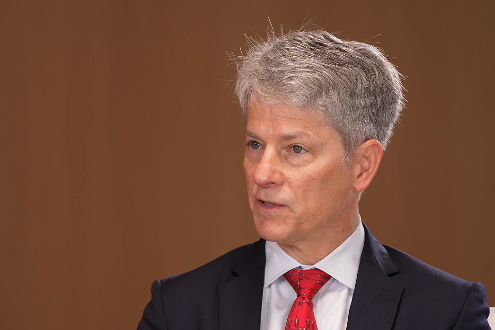Reaching out

| International pharmaceutical companies see more business possibilities in China's smaller cities as the government increases its spending on healthcare. Kong Xiaozheng / for China Daily |

China's commitment to healthcare in rural areas, small cities bodes well for foreign pharmaceutical firms
As the Chinese government continues to ramp up healthcare reform, foreign pharmaceutical companies are bringing their expertise and experience to seize potentially lucrative business opportunities in China's lower-tier cities and rural areas. Companies such as Novo Nordisk, a Danish healthcare provider, and Pfizer, the American multinational, are training doctors to better treat diabetes and other chronic diseases, establishing new research and development facilities and bringing less costly drugs to China's rural areas as the nation pays greater attention to areas long neglected.
"We are working with the Chinese Center for Disease Control and Prevention, a branch of the Ministry of Health, to improve the capacity of doctors in small cities and counties to have the knowledge to treat diabetes. They should have the same knowledge as doctors in big cities," says Ron Christie, senior vice-president of Novo Nordisk AS and president of Novo Nordisk (China) Pharmaceuticals Co Ltd.
Medical reform in China began in 2009, with the goal of establishing universal healthcare by 2020 and allowing access to affordable public hospitals and national medical insurance. The central government is spending a total of 400 billion yuan ($64 billion; 48 billion euros) by 2020 to improve healthcare in rural regions, improve the prevention of psychological diseases, create a digital public health information network, innovate medical devices, develop traditional Chinese medicine, and train more doctors.
As of last year, China added about 400 drugs from foreign countries and 200 traditional Chinese medicines to its list of essential drugs. It has also increased spending on public health insurance, particularly for rural residents, with the goal of insuring about 95 percent of its rural population. Under a new medical-care system designed for rural people, government subsidies are expected to reach 280 yuan per person annually later this year, an increase from the current 240 yuan.
The increase in national spending has created many possibilities for the world's drug-makers. IMS Health Inc, an international medical-care research firm based in Connecticut, says China will become the world's second-largest pharmaceutical market by 2016. The Chinese pharmaceutical market is currently the third-largest in the world, with $67 billion (50 billion euros) in revenue last year. IMS expects China's market to grow by 18 percent a year until 2016, when it will reach a predicted market value of $165 billion.

With a massive base of potential patients and growth opportunities, competition among pharmaceuticals companies, both foreign and domestic has intensified.
International companies, such as Novo Nordisk, Eli Lilly and Co, Bayer and Novartis International AG, are looking into working with China's county-level hospitals and community healthcare centers.
Christie says Novo Nordisk has been consistent in accessing small cities and counties in China for a number of years. The Danish insulin producer plans to invest 55 million yuan over the next five years to improve the way doctors treat diabetes and other chronic diseases in China's rural areas.
China is the world's diabetes capital with 92 million diabetics. That number could exceed 96 million this year, according to a 2012 report by the International Diabetes Federation.
"Diabetes in China is getting severer. We saw the progression in China's rural areas and people there are financially capable and keen to obtain foreign drugs through county-level hospitals," Christie says. "So, we need our drugs to be available to Chinese patients there."
Novo Nordisk recently completed construction of a new $100-million research and development facility in Beijing and will increase the number of scientists in the capital by 50 percent to 300 in two years. The company expects a 15 percent growth in China sales in 2012 after making 6 billion yuan in 2011.
"For overseas companies, entering China's smaller markets is a practical method to sell more drugs because doctors' capability and medical equipment in county-level hospitals have notably improved along with the nation's economic growth," says Li Haiyan, a professor at Peking University's Health Science Center.
Li says patients in county-level hospitals will get accurate examination results and prescriptions directly from local doctors instead of having to travel great distances to cities, which has been the case for many years. Indeed, the cost of traveling to major cities is often higher than the cost of treatment. It is also difficult for rural residents to register with an experienced doctor in China's top-tier cities such as Beijing and Shanghai. The average price for city and rural residents for diabetes medication is about 450 yuan per month.
He also adds that "because of the poor quality of domestic generic drugs, foreign companies have also discovered this could be their edge to expand into China's county-level markets".
"They are not only selling high-end patented drugs, but they are also bringing affordable generic drugs through joint ventures," Li says.
One such company is Pfizer. It partnered with Zhejiang Hisun Pharmaceutical Co Ltd to form a joint venture in East China's Zhejiang province last year to develop, manufacture and commercialize off-patent pharmaceutical products in China and other markets. With an investment of $295 million, Hisun owns 51 percent of the company while Pfizer has the remaining 49 percent. Their manufacturing plant is in Fuyang, Zhejiang province, with a research facility in Hangzhou, Zhejiang province, and an administration center in Shanghai.
Tan Lingshi, chairman and general manager of Pfizer (China) R&D Co Ltd, says producing high-end generic drugs is another way to approach the Chinese market because it is more beneficial to patients from different levels of income.
"There are a lot of generic drugs being used in the Chinese market. But it depends on who are making them and what kind of credibility they have. If generic drugs are being produced by foreign companies with strict quality control, consumers in China will be more inclined to choose those drugs," Tan says.
Chinese drug producers, meanwhile, are working to safeguard their share of the county-level market. Shanghai Pharmaceuticals Holding Co Ltd is among the local companies that have formed joint ventures with foreign drug manufacturers and have invested heavily in developing Western drugs, Chinese patented drugs and traditional Chinese medicine. It has established a number of alliances with international pharmaceuticals such as Roche, the Swiss healthcare company, and has developed partnerships with Swiss multinational Novartis and German's Bayer.
In 2011, Guangzhou Pharmaceutical Holdings Ltd joined with two Australian drug companies to establish a registration and sales center for traditional herbal medicines in the country.
But Thermo Fisher Scientific Inc, a healthcare equipment company based in Massachusetts, is taking a different tactic. It is helping Chinese pharmaceuticals in the competition against foreign healthcare companies.
"As big multinational companies are heavily invested in China, Chinese pharmaceutical companies are optimizing their resources and readjusting development models to maintain the county-level market share while they still dominate it," says Mike Shafer, Thermo Fisher's president in China. "This gives us an opportunity to sell more instruments and technical service for healthcare products.
"We have launched a program focus on (traditional Chinese medicine) that basically talks about everything such as herb-originated bioactive substances and separable analysis of TCM ingredients. So this could be an integrated workflow and solution for a number of Chinese companies, which has become one of our priorities in China," he says, "because TCM and Chinese patented drugs are still favorable options for Chinese patients in county-level markets."
Thermo Fisher gained $600 million revenue in China and added 300 people to its China research and production teams in 2011. With a $30 million investment in the Chinese market, it established its sixth plant in Suzhou, Jiangsu province, last November to manufacture medical equipment.
One of the major issues for foreign drug producers in China is counterfeit medicines and syringes with their logos on it. Many medical products in China look similar to their products but are actually made from Chinese brands, especially in third-tier and county-level markets.
John C. Lechleiter, chairman, president and CEO of Eli Lilly, says China needs to further strengthen its control on intellectual property rights, considered a prerequisite for internationally based pharmaceuticals to spend billions of dollars on a market.
"A transparent system of protecting intellectual property rights is the foundation that could attract foreign drug manufacturers to make a considerable amount of investment to develop new products and technology. The benefit will be mutual," Lechleiter says.
Li at Peking University's Health Science Center says that while foreign companies are proficient in getting their products into China's top and second-tier cities, they must be aware that pricing is the key to win in the county-level markets.
"Foreign companies should also identify their key advantages to influence China's low-tier markets, including sales tactics, scale, manufacturing capability and quality," he says.
(China Daily 01/25/2013 page10)
Today's Top News
- China's foreign trade up 2.5% in first five months
- China unveils first deep-sea testing site
- Green algorithms leading sustainable revolution
- Tech narratives equally vital in AI progress
- China approves some rare earth export applications
- Sino-US talks expected to help build up consensus































